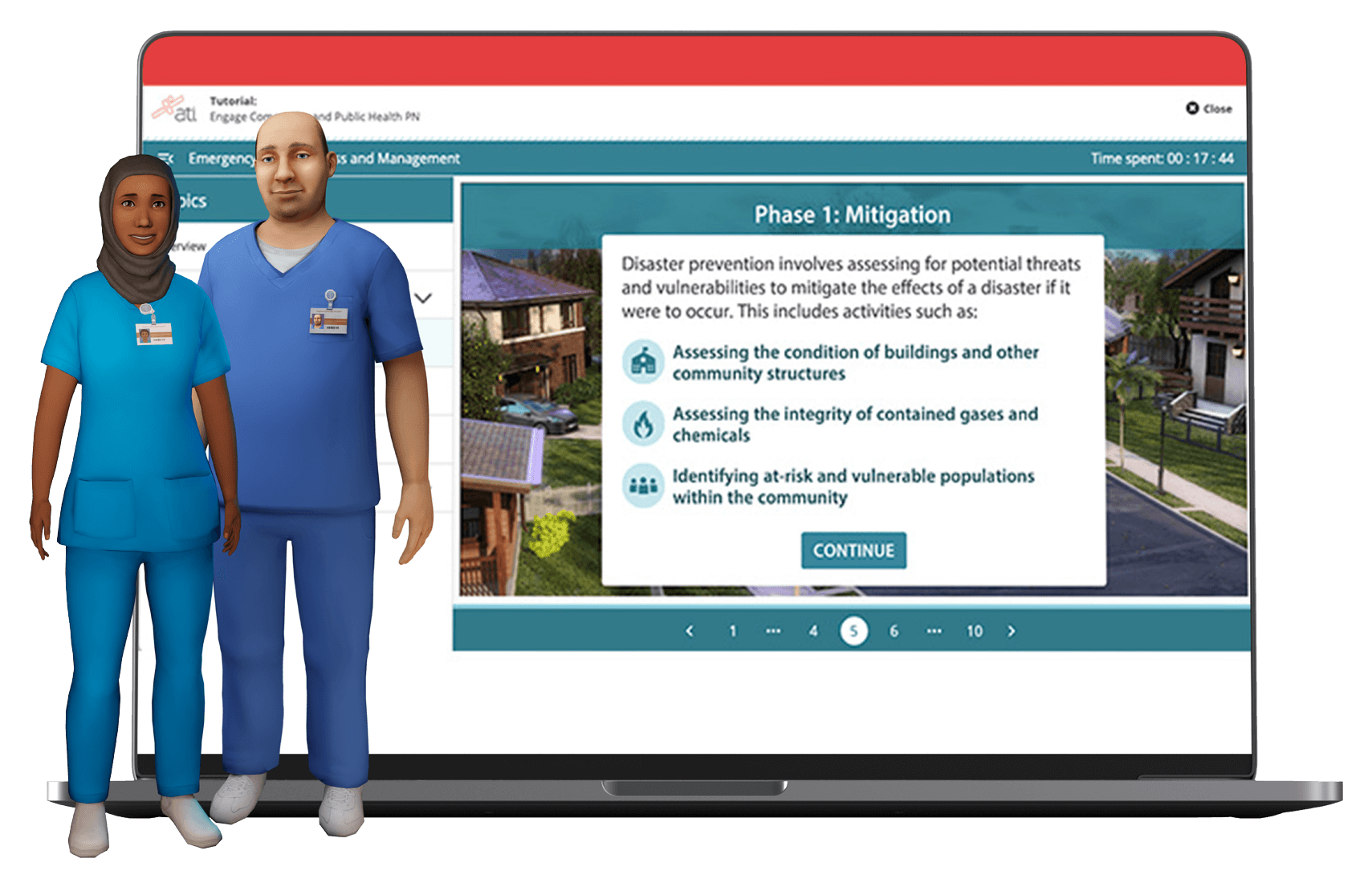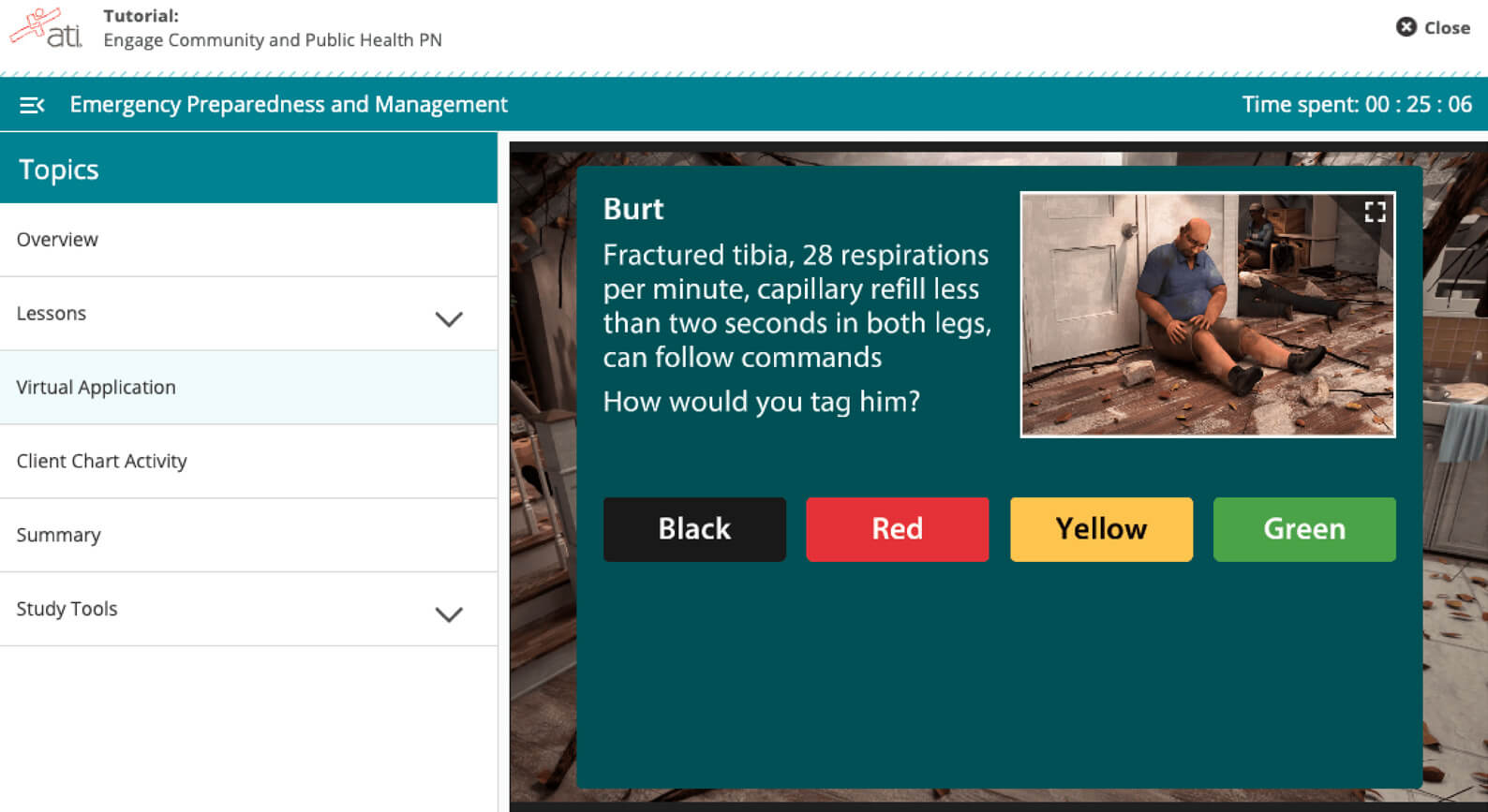Engage® Community & Public Health
Give your students an interactive, digital learning experience that includes applications with supporting logic, quizzes, podcasts, and other multi-media resources to effectively teach them all the need-to-know Community and Public Health content.
Request more info
Help students see the big picture.
With lessons focused on theories, concepts, historical influences, and principles of community and public health, students will be exposed to realistic public health scenarios that will shift their mindset from a focus on individual care to the big picture of population health.


Question-embedded videos enforce more productive feedback-driven problem-solving behaviors than textbook readings, leading to substantial gains in performance and metacognitive monitoring. The result is better-prepared students for in-class instruction.1
1Pulukuri, S., & Abrams, B. (2021, June 9). Improving learning outcomes and metacognitive monitoring: Replacing traditional textbook readings with question-embedded videos. Chemical Education Research, 2156-2166. Retrieved from https://doi.org/10.1021/acs.jchemed.1c00237
With Engage Community & Public Health, your students will enjoy:
- 18 interactive learning modules
- Podcasts and audiobooks
- Unfolding case studies
- Simulated real-live scenarios
- Quizzes
- Test banks with NGN items
- Clinical Judgment activities
- And more!

With 18 evidence-based learning modules, Engage Community and Public Health covers all the need-to-know content for your students to be successful in this learning area.
Foundations of Community and Public Health Nursing
- Introduction to Community, Population, Public, and Global Health
- Historical Influences on Community and Public Health Nursing
- Principles in Community and Public Health Nursing
Drivers of Health
- Individual Influences
- Social Influences
- Economic Influences
- Environmental Influences
Using the Evidence
- Evidence-Based Practice
- Epidemiology
- Prevention and Control of Diseases and Illnesses
Improving the Community’s Health
- Community Program Planning, Implementation, and Evaluation
- Health Education
- Emergency Preparedness and Management
Individual and Family Well-Being
- Family
- Children
- Adults
Populations at Risk for Disruptions in Well-Being
- At-Risk and Vulnerable Populations and Related Effects on Health
- Violence and Abuse
We have everything you need to put Engage Community and Public Health to use right away:
- PowerPoints
- Test banks with NGN items
- Pre-written lesson plans
- Clinical judgment case studies with concept maps
- Implementation guides
- Expert charts for EHR documentation activities
- Self-reflection activities
Ready to reimagine your classroom with the Engage Series?
For more information about the Engage Series products, contact your Client Executive or fill out the form and an ATI representative will contact you soon.
Contact us
Let’s get you to the right team. Which describes you best?
Who would you like to contact?
Please fill out the form below to contact our sales team.
We will typically contact you within 1-2 business days.
If your institution is not listed, please search and select Other
You have landed on our educator site. Choose an option below to view our student site.
View student products Contact customer supportExplore our other Engage solutions:


